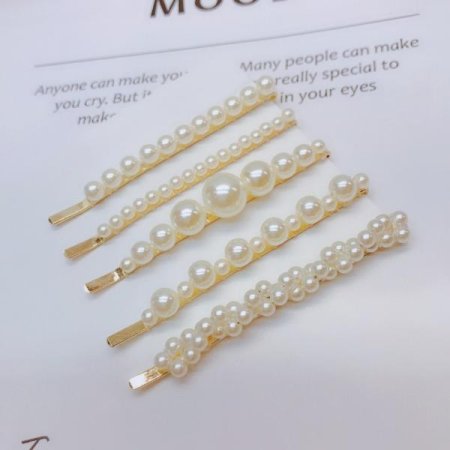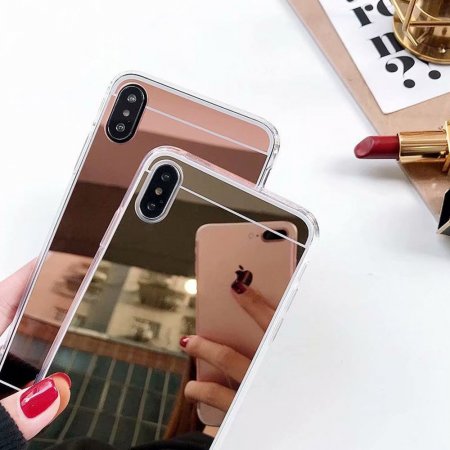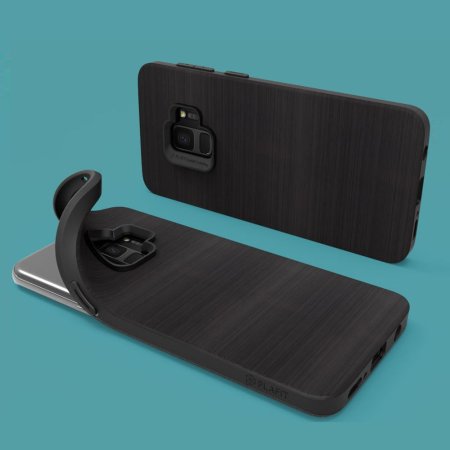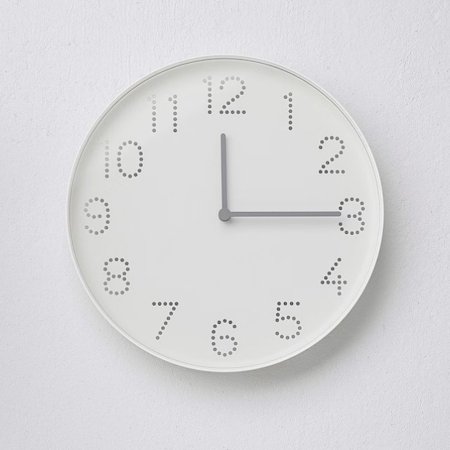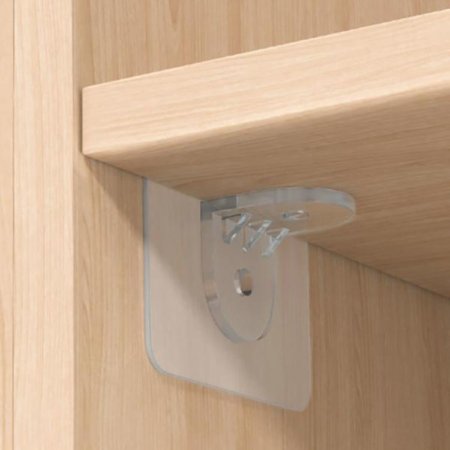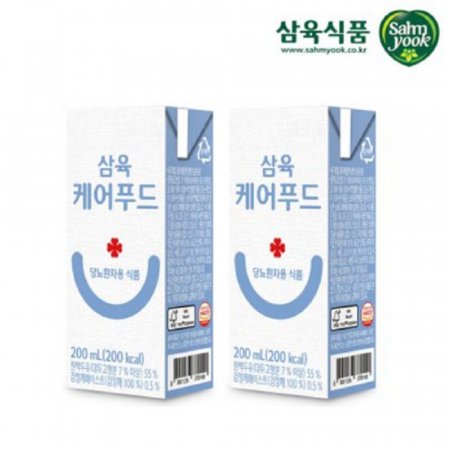[문화재청](국영문 동시 배포) 경주 쪽샘 44호에서 바둑돌 200여점과 함께 쏟아진 신라 여성 호화 장신구
정책
0
47
0
2020.12.07 11:27

문화재청 국립경주문화재연구소(소장 이종훈)는 2014년부터 추진한 경주 쪽샘지구 신라고분 44호 돌무지덧널무덤(적석목곽묘)에 대한 정밀발굴조사를 통해 ▲ 무덤 주인공이 착장한 금동관(1점), 금드리개(1쌍), 금귀걸이(1쌍), 가슴걸이(1식), 금·은 팔찌(12점), 금·은 반지(10점), 은허리띠 장식(1점) 등 장신구 조합, ▲ 비단벌레 딱지날개로 제작된 금동 장식 수십 점, ▲ 돌절구·공이, ▲ 바둑돌(200여 점), ▲ 운모(50여 점) 등을 지난 달 한꺼번에 발굴하였다.
* 발굴조사 현장: 경상북도 경주시 황오동 349-3번지 쪽샘유적발굴관
* 운모(雲母): 화강암 가운데 많이 들어 있는 규산염 광물의 하나로 도교(道敎)에서는 운모를 장기간 복용하면 불로장생을 할 수 있는 선약(仙藥)으로 인식
44호 돌무지덧널무덤의 주인공이 착장한 장신구들의 조합은 전형적인 돌무지덧널무덤에서 나오는 장신구 양식들이며, 특히, 가슴걸이는 남색 유리구슬과 달개가 달린 금구슬, 은구슬을 4줄로 엮어 곱은옥을 매달았는데 이러한 형태는 황남대총이나 천마총 같은 최상위 계층 무덤에서만 확인되었던 디자인이다.
* 달개(영락, 瓔珞): 금관 따위에 매달아 반짝거리도록 한 얇은 쇠붙이 장식
이렇듯 장신구의 구성(조합상)과 재질 등을 고려했을 때, 44호의 주인공은 신라 돌무지덧널무덤(적석목곽묘) 축조기의 최상층(왕족)으로 추정되며, 장식대도가 아닌 은장식 도자(刀子:작은 손 칼)를 지닌 것으로 보아 여성일 가능성이 높다. 출토유물을 기준으로 한 피장자의 신장(身長)은 약 150㎝ 전후로 추정되는데 금동관, 귀걸이, 팔찌, 허리띠 장식 등 장신구의 크기가 전반적으로 작은 점도 피장자가 여성일 가능성을 뒷받침한다. 장신구 크기가 작은 점은 기존 조사 사례 중 금령총과 유사하다.
* 장식대도(裝飾大刀): 꾸밈을 한 큰 칼
금동관과 은허리띠 장식은 현재로선 정확한 문양과 형태를 파악하기는 어렵지만, 추후 보존처리를 통해 정확한 내용을 파악할 수 있을 것이다.
44호 돌무지덧널무덤의 축조연대는 출토된 토기, 금귀걸이나 금팔찌의 형태로 보아 금관총 출토유물과 유사한 점으로 비추어 5세기 후반으로 추정된다.
이번에 또다른 주목할만한 유물은 비단벌레 장식이다. 주인공 머리맡에 마련된 부장궤(副葬櫃, 부장품 상자) 상부에서 수십 점이 확인되었다. 비단벌레의 딱지날개 2매를 겹쳐 물방울 모양으로 만들고, 앞뒤판 둘레를 금동판으로 고정하여 만든 장식이다. 크기는 가로·세로 1.6×3.0cm에 두께는 2㎜정도 소형이며, 신라 고분에서 지금까지 확인된 바가 없는 형태와 크기의 장식이다.
비단벌레 장식은 기존 신라 고분에서도 황남대총 남분, 금관총, 계림로 14호 등 최상급 무덤에서만 출토된 바 있어 이번 44호 피장자의 위계를 상징적으로 가늠해볼 수 있는 유물로 판단된다.
또한, 지금까지 신라 고분에서 발견된 비단벌레 장식은 모두 마구에 사용되었기 때문에 이번 비단벌레 장식도 안장이나 장니(障泥 말다래)에 매달아 사용한 것으로 추정해 볼 수 있다.
* 비단벌레: 딱정벌레목 비단벌레과에 속하는 곤충으로 녹색 또는 금록색 광택이 나는 성충의 앞날개를 이용하여 각종 장식에 사용
* 말다래: 말 탄 사람 다리에 흙이 튀지 않도록 안장 밑에 늘어뜨리는 판
돌절구와 공이는 주인공 머리맡 부장궤(副葬櫃) 안 철솥 바로 옆에서 함께 확인되었다. 돌절구는 바닥이 평평하고 세로로 긴 형태이며, 화강암을 연마하여 위쪽에 얕은 함몰부를 만들었다. 돌절구의 크기(높이 13.5cm, 폭 11.5cm)와 함몰부의 용량(약 60ml)으로 보아 곡물을 빻는 실질적인 용도라기보다는 상징적 의미로 부장되었을 수도 있고, 약제를 조제하는데 사용한 약용 절구(현대의 막자사발과 같은 용도)로 추정해 볼 수 있다.
지금까지 신라고분에서 출토된 사례는 황남대총 남분에서 돌절구·공이 1묶음, 서봉총에서 공이 1점이 확인된 바 있다. 이외에 출토지는 정확히 알 수 없지만, 국은(菊隱) 이양선 박사(1916~1999)의 기증 유물 가운데도 돌절구와 공이 1묶음이 있다.
바둑돌은 피장자 발치 아래에 부장된 토기군(土器群) 사이에 대략 200여점이 모여진 상태로 확인되었다. 크기는 지름 1~2㎝, 두께 0.5㎝ 내외이고 평균적으로 1.5㎝ 정도의 것이 가장 많다. 색깔은 크게 흑색, 백색, 회색으로 나눌 수 있으며, 인공적으로 가공한 흔적이 없어 자연석을 그대로 채취해서 사용한 것으로 추정된다.
과거에도 신라시대 바둑돌은 황남대총 남분(243점), 천마총(350점), 금관총(200여점), 서봉총(2점) 등 최상위 등급의 돌무지덧널무덤에서만 출토된 바 있다.
이후 시기로 넘어가면 7세기대 굴식돌방무덤(횡혈식석실묘)인 용강동 6호분(170점)에서도 확인되었고, 분황사지에서는 가로·세로 15줄이 그어진 바둑판 모양의 전돌(벽돌)이 출토되기도 했다.
삼국사기나 삼국유사에는 효성왕(재위 737∼742)대 기록에 효성왕이 바둑을 뒀다는 내용과 신라 사람들이 바둑을 잘 둔다는 내용 등이 확인된다. 이번 바둑돌은 기록에 전하는 신라인들의 바둑문화에 대한 실물 근거자료가 될 것이다. 다만, 그동안 바둑돌이 출토된 무덤의 피장자는 모두 남성으로 추정되어 당시 바둑이 남자의 전유물로 이해되기도 하였지만, 이번 피장자는 왕족 여성으로 추정되고 있어 바둑돌에 대한 새로운 해석과 의미를 부여할 수 있는 자료로도 기대된다.
2014년부터 진행한 이번 경주 쪽샘지구 신라고분 44호분 발굴조사는 올해로 7년차이고, 현재 매장주체부 유물 노출까지 진행되었다. 그동안 호석(護石) 주변에서 행해진 제사흔적, 봉분 성토방식, 적석부 구조와 축조방식, 다양한 지점에서의 의례행위 등이 확인되었다. 이를 통해 중대형 적석목곽묘의 구조와 축조방식을 복원할 수 있는 다양한 근거자료를 확보하였고, 이번에 공개하는 유물을 통해서는 당대 신라 최고 지배층 사회의 장묘문화를 이해할 수 있었다.
* 둘레돌(호석, 護石): 무덤의 둘레에 돌려 쌓은 돌
앞으로의 조사에서는 부장궤에 겹겹이 쌓인 상태로 출토된 다양한 유물에 대한 정밀한 조사와 분석을 시도할 것이며, 무덤의 하부구조와 호석, 적석부에 대한 해체조사를 통해 고분 전체의 구조와 축조과정을 완벽히 복원해 내고자 한다. 나아가 국내외 연구기관과의 협력 관계를 바탕으로 경주 쪽샘지구 44호 적석목곽묘의 학술조사에 있어서 철저한 고증과 학제 간 연구를 진행할 예정이다.
문화재청 국립경주문화재연구소는 정부혁신의 하나로 발굴과정의 실시간 공유, 정기적인 조사성과 공개, 대국민 현장설명회, 다양한 체험 프로그램 등을 통해 국민과 소통하는 발굴조사가 되고자 노력하고 있다. 이번 쪽샘 44호분 조사결과 역시, 발굴조사 현장설명회를 7일 오후 4시 국립경주문화재연구소 유튜브를 통해서 실시간으로 온라인 현장설명회와 실시간으로 질의응답을 할 수 있는 자리를 마련해 국민에게 투명하게 공개하고 소통할 것이다.
* 온라인 현장설명회 : 국립경주문화재연구소 유튜브
(https://www.youtube.com/channel/UCyvYCBA2aJFa8hIdIpur82Q)
Luxurious Ornaments of Silla Women with 200 Pieces of Baduk Stones at Tomb no. 44 in Jjoksaem, Gyeongju
- To Identify Gilt-Bronze Ornaments with Golden-Edge Jewel Beetles and a Stone Mortar and Pestle/ Online Presentation at 4pm on 7th December-
The Gyeongju National Research Institute of Cultural Heritage (GNRICH_Director Lee Jong-Hoon) has carefully excavated theSillaancient tomb no. 44* at Jjoksaem in Gyeongju since 2014. Last month, the GNRICH discovered various ornaments, which tomb owner wore, including a gilt-bronze crown, a pair of gold pendants, a pair of gold earrings, a chest ornament, 12 pieces of gold and silver bracelets, 10pieces of gold and silver rings, a silver belt ornament, gilt-bronze ornaments decorated with golden-edge jewel beetles, a stone mortar and a pestle and 200 pieces of baduk stones and 50 pieces of mica* through this close excavation research.
*Excavation area: 349-3, Seongdong-dong, Gyeongju-si, the Jjoksaem Housed-Excavation Site.
**Mica: Mica is one of the silicate minerals. It was believed as a medicine for perpetual youth and longevity in Taoism.
Styles of the ornament assemblages, worn by the owner of the Silla stone-piledwooden chamber tomb no. 44, are a typical type that could be found in the wooden chamber tombs. In particular, the chest ornament was woven in 4 rows of gold and silver beads with indigo glass beads and Dalgae*. Such style was a design that onlyfound in the upper-class tombs such as Hwangnamdaechong (Great Tomb of Hwangnam) and Cheonmachong (Tomb of the Heavenly Horse).
* Dalgae: thinmetal adornments dangle from crowns to twinkle.
To consider assemblages and materials of adornments, the owner of the Silla stone-piledwooden chamber tomb no. 44 could be presumed as a royal family. In addition, there is a high possibility that the person could be female as she carries a knife with silver decoration rather than an adorned dagger (裝飾大刀). Based on excavated artifacts, the height of the buried person is estimated to be about 150cm. Overall small size of ornaments, including a gilt-bronze crown, earrings, bracelets and pendants for a belt, proves that the buried person is a woman. The small size of adornments is similar to Geomryeongchong (Tomb of the Golden Bell) among the previous investigations.
Although it is hard to identify exact pattern and shape of the gilt-bronze crown and silver belt adornment at the moment, it will be identified through preservation research later. The construction date of the Silla stone-piled wooden chamber tomb no. 44 is assumed to be in the late 5th century considering the similarity with excavated earthenware, styles of gold earrings and bracelets from Geomgwanchong (Tomb of the Golden Crown).
Another remarkable artifact is the decorations of golden-edge jewel beetles. Dozens of decorations of golden-edge jewel beetles were found in the upper part of a chest for grave goods, placed at the head of a buried person. Two wings of golden-edge jewel beetles overlaid to form a water drop and were fixed by a gilt-bronze panel in its front and back. Its size is 1.6x3.0cm in width and length and 2mm in thickness. The form and size of the accessories have not been found in any Silla ancient tomb thus far.
The ornaments of golden-edge jewel beetles at tomb no. 44 lead to assume the status of the buried person. It is because that the decorations golden-edge jewel beetles had been discovered only from tombs of the highest ranks in Silla, such as the south tomb of Hwangnamdaechong, Geomgwanchong and the Tomb no. 14 in Gyerim-ro. Furthermore, all the adornments of the golden-edge jewel beetles from the Silla ancient tombs were all horse gears thus far. Because of that, these ornaments from the tomb no. 44 could be used to hang on saddlesor saddle flaps.
A stone mortar and a pestle were identified together right next to the iron pot inside of the chest at the buried person’s head. The stone mortar has a flat bottomin a rectangular shape. It was made of granite and polished to make a shallow hollow in the top. Based on its size (height 13.5cm, width 11.5cm) and capacity of its hollow (about 60ml), the mortar is estimated to be buried for a symbolic meaning or used as a mortar for medicine rather than a practical mortar for wheats.
Up to date, there were cases to find mortars and pestles from the Silla ancient tombs; a set from the south tomb of Hwangnamdaechong and a pestle from Seobongchong (Tomb of Auspicious Phoenix). Although the find location is not clear, there is a mortar and pestle setin donated artifacts by Dr. Kukeun Lee Yangseon (1916~1999).
200 pieces of baduk stones were excavated between earthenware under the feet of the buried person. The size is about 1~2cm in diameter and 0.5cm in thickness and most of them were 1.5cm in diameter in colors black, white and gray. It is presumed that baduk stones were collected in nature and used as it was because there were no traces of artificial process. In the past, baduk stones of the Silla era were unearthed in tombs of the highest class, such as 243 pieces from the south tomb of Hwangnamdaechong, 350 pieces from Cheonmachong, 200 pieces from Geomgwanchong and 2 pieces from Seobongchong. After this period, 170 pieces of baduk stones were found in the 7th century’s stone chamber tomb no.6 with tunnel entrances in Yonggang-dong and a baduk-board-shaped stone with engraved 15rows vertically and horizontally were discovered at Bunhwangsa Temple site.
According to King Hyoseong parts (reigned. 737-742) in the Samguksagi (history of the Three Kingdoms) and Samgukyusa (memorabilia of the Three Kingdoms), there were records that the King Hyoseong played baduk and the Silla peopleplayed baduk well. These baduk stones could provide the actual supporting data about baduk culture in Silla. Hitherto, tomb owners where baduk stones were excavated were all assumed to be male. Hence, it was predicted that baduk was the exclusive property of men. As the tomb owner at this time is presumed to be female,it is expected to give new interpretation and meaning to the baduk culture.
This excavation on the Silla ancient tomb no. 44 at Jjoksaem area in Gyeongju, which has been conducted since 2014, has been in its 7th years this year. Currently, the excavation has been exposed artifacts from the buried person. In addition, ritual traces performed around stone protection for the tomb, burial methods, structure and construction methods of piling stone and ritual acts at various spots have been identified. Through this, various supporting materials are ensured to restore the structure of the medium and large stone-piled-wooden chamber tombs and its construction methods. Moreover, these unearthed artifacts lead to understand the burial culture of the Silla’s highest ruling society at that time.
In the future investigation, the GNRICH will closely research and analyze various artifacts excavated in layers. The GNRICH will also restore the structure and construction process of the entire tomb through dismantling investigation of the tomb’s substructure, stone protection and piled stone part. Furthermore, the GNRICH will conduct thorough and interdisciplinary researches on the stone-piledwooden chamber tomb no. 44 at Jjoksaem area in Gyeongju based on the co-operation with domestic and overseas research institutes.
The Gyeongju National Research Institute of Cultural Heritage, under the Cultural Heritage Administration, strives to make an excavation research that communicates with the people through the real-time sharing of the excavation process, regular report of research results, on-site presentation to the public and various experience programs. The result of this excavation research on tomb no. 44 will be held to present at 4pm on the 7th of December through the GNRICH YouTube channel. From the YouTube, online presentation and question-and-answer session will be in real-time to communicate with the public.
The GNRICH YouTube channel:
https://www.youtube.com/channel/UCyvYCBA2aJFa8hIdIpur82Q
?<주인공 착장 장신구 묶음(세트)>
[자료제공 :











